What is a Pedometer & How it Help Track Your Steps?
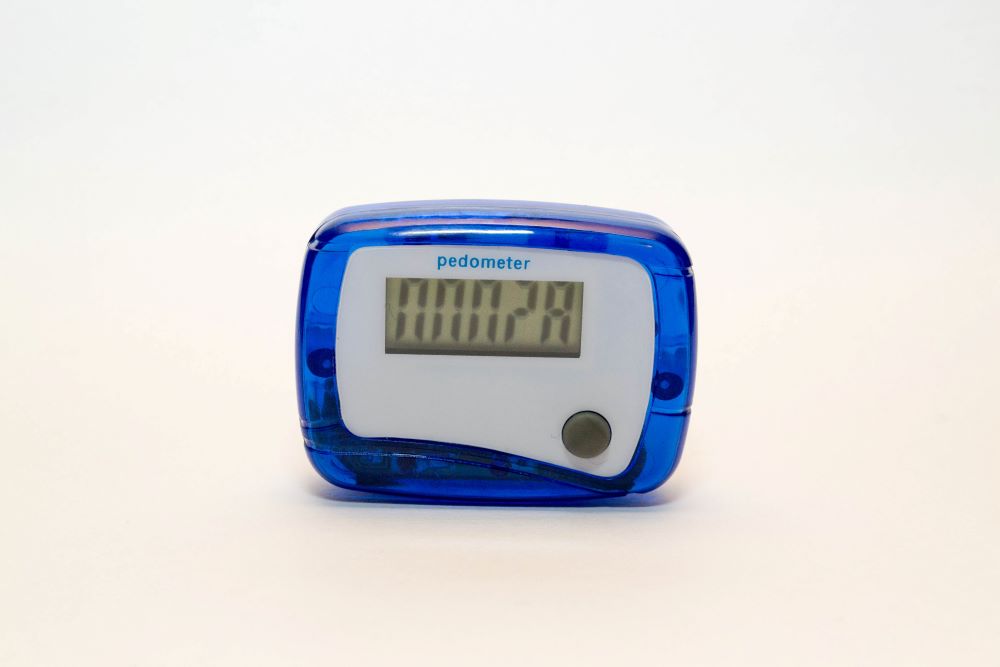
When you are walking to achieve fitness, the key to success is staying motivated. You can only attain your target if you make walking a part of your daily routine. There are many walkers and fitness enthusiasts who measure walking using a device called a pedometer.
If you also want to analyse your progress, you can use this effective tool that encourages an active and healthy lifestyle. There are also many types of pedometers available in the market. This article will provide you with all the details of the device and let you know the benefits of the same.

Table of Contents

What Is a Pedometer?
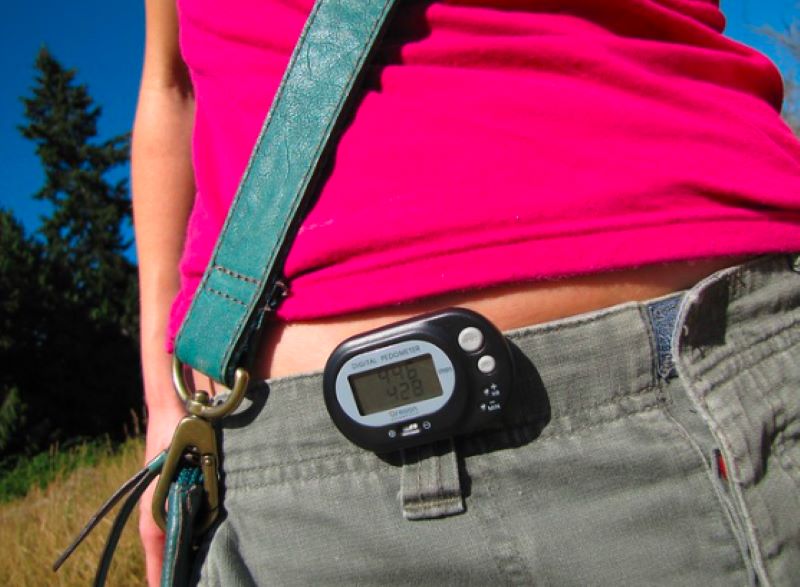
A pedometer is a small device that you can use to measure the number of steps you have taken during each walking session. It also helps to measure the distance you cover, calories you have burnt, and even the time spent in exercise.
Walking is one of the best physical activities that help to develop endurance and allows you to stay in shape. As per some studies, you should ideally walk 10,000 steps a day to stay active and healthy. As you use this device, you become much more aware of your physical activity and can rank your daily performance in your logbook.
Why Do We Need a Pedometer?
One of the finest ways to increase your activity level is to go for walks. It's a cheap and simple method to stay active and in shape for most people. A pedometer, step counter, wearable technology, or fitness app reminds you to walk more. Experts advise a minimum of 25 minutes a week of moderate to intense exercise, including brisk walking.
A pedometer is a simple and enjoyable way to monitor your activity level. It adds up the total steps you take in a day, which might inspire you to walk. A fast check could indicate that you need to walk more throughout the day and assist you in creating objectives to walk more. A few may also display the number of calories you've burned.
What are the Different Types of Pedometers?
Each type of pedometer is tailored to different preferences and needs, offering varying levels of convenience, accuracy, and functionality. The nine different types of pedometers include:
- Accelerometer Pedometer: You can wear this device on your waist that measure steps through an accelerometer. An accelerometer is a device that helps to measure time and vertical acceleration to analyse the steps.
- Spring-levered Pedometer: You need to wear this device on your belt or your waist. The movement of your body allows the spring-suspended lever arm to move up and down. Every up and down is counted as a step.
- Pocket Pedometer: This device allows you to keep it in the pocket of your pants rather than wearing it on your waist. But if you are obese or just out for a stroll, it can result in inaccurate results.
- Thigh Pedometer: You can wear pedometers on your thigh to help you analyse the steps you take while walking, offering a stable placement for more precise step counting and reduced movement-related errors..
- Ankle Pedometer: These pedometers are attached to your ankle and help to count steps by analysing your movement patterns. They do not come with any issues related to weight or speed. and are easy to wear and use.
- Wrist Pedometer: This device records your steps while you are doing other physical activities, such as moving your wrists while talking or walking. They come with high accuracy rates. Many people wear these to work under their formal attire.
- Foot Pedometer: As you walk and strike your heels, these pedometers count the steps. You have to wear them on your foot or your shoes. These pedometers that count steps are more accurate than those you wear on your body.
- Bluetooth-Enabled Pedometers: These pedometers will be linked wirelessly to a smartphone or other device to sync data and provide detailed tracking and analysis, making it easy to monitor and share your fitness progress in real-time.
- Waterproof Pedometers: The waterproof pedometer is one of the newest technological designs available and is designed to continue working in most climatic and aquatic situations, measuring swimming or running in the rain.
What are the Features of a Pedometer?
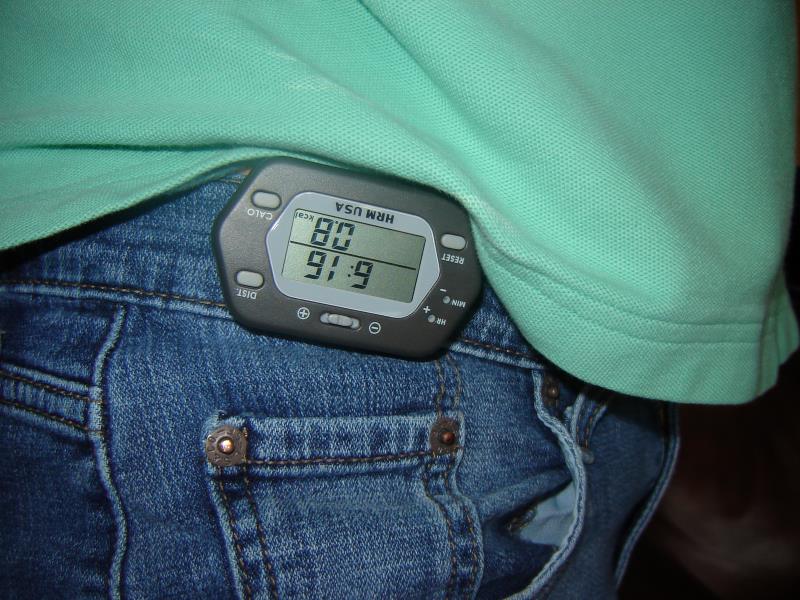
A pedometer is a device that counts steps and calculates the amount of physical activity a person does. Some of the basic features of a pedometer generally include:
Advanced models may contain additional features such as GPS tracking of outdoor activities, heart rate monitoring, or the like while integrating with other exercise tools to afford a person an overall scope of physical activity or general health.
What are the Benefits of a Pedometer?
Using a pedometer comes with various benefits. If you have a pedometer, you can benefit from its benefits. The benefits of a pedometer are as follows:
- These devices are an excellent option to provide reliable measurement in analysing your daily activity.
- It allows you to make necessary adjustments so that you do not overestimate your actual number of steps.
- It comes with a distance, speed, pace estimate, a stopwatch, and an exercise timer.
- This device provides accurate measurements of your calories and helps you to engage in daily activities. This reduces diabetes, heart disease, stress, blood pressure, and cholesterol levels.
- Pedometers can be used with diet logging that allows you to balance calories burnt with calories intake.
- With the use of a pedometer, along with increased physical activity, you can plan your weight loss regime too.
- Research has shown that using pedometers allows you to walk 2000 steps more on average. So, your activity increases by 27%.
- With pedometers, you are able to time-track specific workouts.
- Some pedometers come with a clock and an alarm to help you to set your time and track specific workouts.
- It helps you review the previous day's log and sitting time and track activities.
- Some of these devices monitor your sleep too.
- You can upload the data from pedometers to your computer or mobile app.
What are the Uses of a Pedometer?
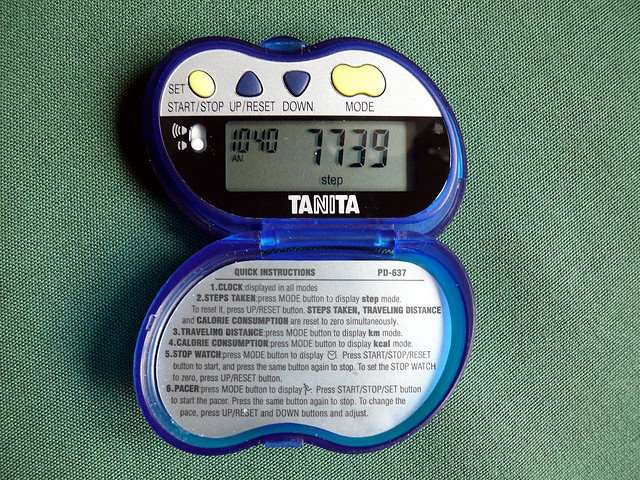
A pedometer is an electronic device that counts a person's steps. Here are some of the common uses:
- Activity Tracker: It enables the user to track their level of physical activity by challenging the latter towards daily step goals for a healthier and fitter self.
- Weight Management: Accounting for steps and Physical Activities can help with weight management and maintaining a healthy lifestyle.
- Health Monitoring: The data regarding physical activity can prove helpful in monitoring health status and changes in general activity.
- Goal Setting: A user can set and monitor the progress of achieving his or her personal fitness or activity goals.
- Motivation: Looking at the step counts and progress can motivate one to do more and include more walking in the routine.
Thus, pedometers will help initiate and monitor a person's physical activity and health status.
How to Use a Pedometer?
It is easier to use a pedometer when you understand how it works accurately. Here are the steps for using pedometers:
Step 1: Switch on your device and walk about 100 steps without looking at the counter.
Step 2: Now, check the steps that the device has recorded. Your device must measure approximately between 85 to 115 steps for every 100 steps that you have taken.
Step 3: Some devices come with a sensitivity setting that you can adjust accordingly.
Step 4: You can write down the reading in your logbook to analyse the steps you take. and set a new goal for the next week.
It is ideal if you wear the device for three days- on a non-working day and two workdays. Then calculate the average steps on these three days and try to work ahead from this data. You can aim to increase your goal by 500 steps each day of each week.
What are the Things to Remember While Wearing a Pedometer?
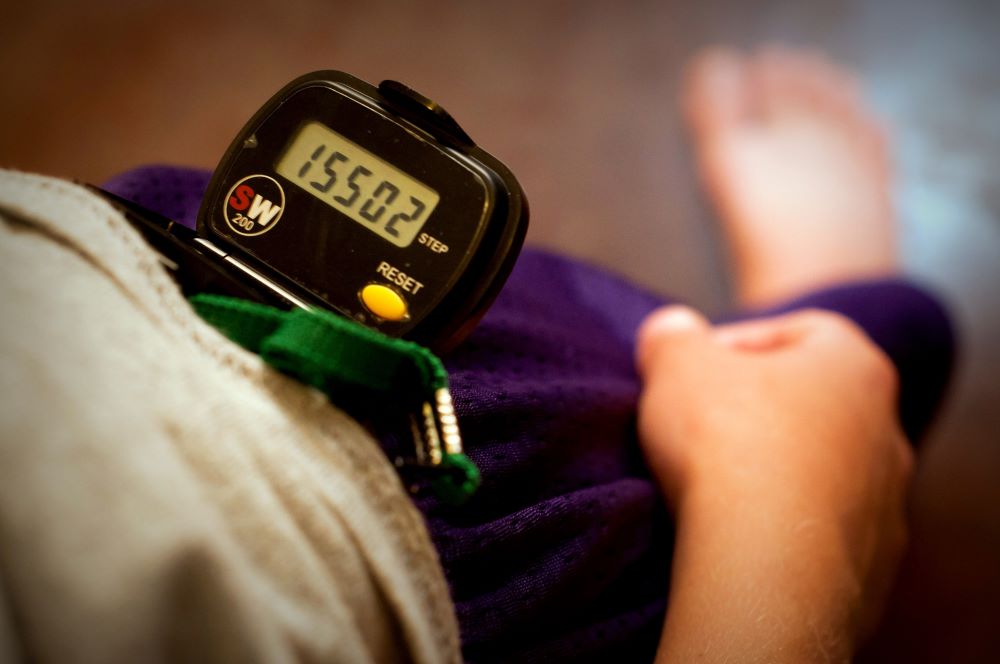
Wearing a pedometer is an effective way to track your daily physical activity and encourage a healthier lifestyle. Being mindful of the following aspects can help you make the most out of your pedometer:
- It is ideal if you wear the device aligning with your knee cap. Of course, you can wear it underneath your clothes too. However, it is essential to ensure that the device stays upright to help measure your steps accurately.
- If you wear the device to count your total steps, choose the one which is small and comfortable so that you can wear it throughout the day.
- Do not forget to add the safety belt of the device to ensure that they do not fall off or get lost while you are walking.
- You must ensure that your device is easy to read when you wear it on your waist and that it doesn't require removing several times.
- If your device has a reset button, configure it so that you cannot reset it accidentally.
What are the Things to Remember Before Buying a Pedometer?
Before purchasing a pedometer, it’s essential to consider various factors to ensure you select a device that best meets your fitness goals and lifestyle needs. Things you must keep in mind before purchasing this device are:
- You must consult your trainer or a doctor before beginning any fitness regime that needs a pedometer.
- Check the accuracy level of your device to measure the correct steps.
- When tracking steps, don’t just try to increase the steps counter. Always take a slow and gradual approach as you plan to increase your steps.
- Assess the features, such as distance tracking, calorie counting, or heart rate monitoring, to determine if they meet your needs.
- Ensure the pedometer is compatible with other devices or apps you use, especially if you plan to integrate it into a broader fitness tracking system.
- Choose a pedometer that is user-friendly and easy to wear, with a clear display and straightforward functionality.
- Consider the battery life and type, whether rechargeable or requires regular replacements, to ensure it fits your maintenance preferences.
So, now that you know about a pedometer, you must buy one and use it while going out for walks. Read the guidelines for using the device before attaching them. Additionally, if you have any questions regarding the device, your fitness trainer will be the best person to provide you with a solution.
Protect What Matters - Explore Other Insurance Options














